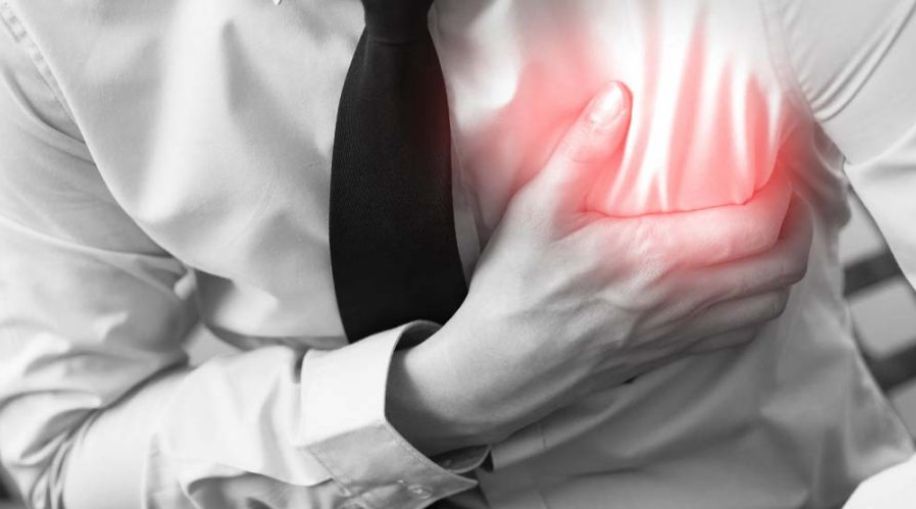How to Tell If You're Having a Heart Attack
This article will explore signs, symptoms and treatments for heart attacks. One cause of heart attacks is ATTR amyloidosis, where a faulty gene causes abnormal protein deposits in organs, including the heart. Over time, this can lead to heart failure, which increases the risk of heart attacks. Amvuttra is an RNA interference therapy for treating transthyretin-mediated amyloidosis (ATTR). It works by reducing the production of abnormal proteins that can lead to heart damage. Treating this disease may reduce the risk of heart attack in the future.
7 Signs of a Heart Attack
Let's take a look at the 7 signs:
- Chest pain or discomfort: Often described as pressure, squeezing, fullness or pain in the center of the chest.
- Pain or discomfort in other areas: Pain may also be felt in the arms, back, neck, jaw or stomach.
- Shortness of breath: Difficulty breathing, even without chest pain.
- Cold sweats: Feeling clammy and experiencing perspiration unrelated to activity or temperature.
- Nausea or lightheadedness: Feeling sick to your stomach or dizzy.
- Fatigue: Unusual and extreme tiredness, especially in women.
- Unexplained anxiety: A sense of impending doom or feeling extremely anxious without apparent reason.
What Causes a Heart Attack?
Typically, a heart attack happens when a heart blockage occurs. This can be a blood clot resulting from a buildup of fat in the coronary arteries. The leading cause of a heart attack is coronary artery disease (CAD). CAD is an accumulation of cholesterol, fats and other substances that line the coronary artery. Parts of this lining, called plaque, can break off and block the heart, resulting in what is known as a heart attack.
Aortic stenosis
Aortic stenosis is a condition where the aortic valve, which controls blood flow from the heart's left ventricle to the aorta (the main artery that carries oxygenated blood to the body), becomes narrowed and obstructs blood flow. This narrowing can lead to various complications, but it doesn't directly cause a heart attack in the conventional sense.
However, aortic stenosis can increase the risk of a heart attack indirectly through several mechanisms:
Left ventricular hypertrophy: The narrowing of the aortic valve forces the heart to work harder to pump blood through the restricted opening.
Coronary artery disease: While aortic stenosis itself doesn't cause coronary artery disease (CAD), the risk factors for aortic stenosis, such as age, high blood pressure and high cholesterol, can also contribute to the development of CAD.
Increased stress on the heart: Aortic stenosis can lead to an imbalance between the supply of oxygen and the heart's demand for oxygen-rich blood.
Heart Specialist Hospitals
Stanford University Medical Center is renowned for its cutting-edge cardiovascular care, boasting a world-class team of heart specialists, advanced research facilities and state-of-the-art technology. Patients from around the globe seek their expertise in treating complex heart conditions, ensuring top-notch care and innovative treatment options.
Cleveland Clinic, a leading academic medical center, is internationally recognized for its excellence in cardiovascular medicine. With a long history of breakthroughs in heart care, their team of heart specialists offers comprehensive and compassionate treatment for patients with various heart conditions, consistently achieving exceptional outcomes and setting new standards in cardiac care.
What Are the Risk Factors?
There are a few risk factors for a heart attack that cannot be changed, such as family history, age or sex. The good news is that many other risk factors for a heart attack can be controlled. Here are some examples of these risk factors.
High Blood Pressure
High blood pressure places excessive force on blood vessels, causing vessels to rupture or fat plaques to dislodge. Medication, stress management and lifestyle changes can manage high blood pressure.
Diet
Consuming a diet that is high in saturated fats, cholesterol and salt can lead to a heart attack. Fats can form plaque buildup in blood vessels. Salt can create high blood pressure, placing excessive force on the vessels.
Physical Activity
A sedentary lifestyle poses a higher risk for a heart attack. Getting enough exercise and maintaining physical fitness are preventative measures.
Obesity
Maintaining a healthy weight can help to reduce the risk of a heart attack. Increased weight impacts the amount of effort the heart requires to work efficiently.
Smoking or Alcohol
Smoking and alcohol can raise blood pressure and increase triglyceride levels. Smoking also lowers the amount of oxygen that the blood can efficiently carry. Smoking can also destroy blood vessels and heart muscles.
Signs of Heart Attack in Women
Heart disease is the leading cause of death in women. Understanding the different signs of a heart attack in women may help to save their lives. Women may have different signs of a heart attack compared to the classic, well-known symptoms exhibited in men. The signs of a heart attack are much more subtle in women, so women may not seek help promptly.
In addition to, or sometimes in place of, the typical signs of a heart attack, women may experience pain as a dull ache and they may experience prolonged feelings of fatigue, almost as if they have the flu. In women, heart blockages can occur in the smaller arteries, causing much more vague signs of a heart attack. Although the signs may be different, the result can be just as deadly.
Emergency Response for a Heart Attack
A heart attack is always an emergency. If you suspect that you or someone else is having a heart attack, call 911 and seek medical assistance immediately. An ambulance is necessary and should be called unless emergency response is not available in the area. The faster medical assistance is obtained, the better the chances are of a positive outcome.
Do not try to drive yourself or the person to the doctor or hospital. A baby aspirin (81 milligrams of aspirin) or a dose of regular-strength aspirin can be administered while waiting for medical assistance.
If a person becomes unresponsive, stops breathing and has a weak or no pulse, cardiopulmonary resuscitation (CPR) or electrical shock (defibrillation) to the heart may be necessary. People who are CPR-trained may help until emergency assistance arrives.
Treatment Options for Heart Attacks
Heart attack treatment focuses on creating blood flow to the heart and minimizing heart damage. Medications may be administered to decrease blood viscosity. This allows blood to flow through arteries more freely, helps to dissolve clots, prevents abnormal heart rhythms and alleviates stress on the cardiovascular system.
Surgery to open the artery and increase blood flow to the heart may also be necessary. These surgeries include stents to create and maintain a path for blood to flow. Coronary angiography, which does not require a stent, may be able to open blocked arteries in some cases.
What Does a Heart Attack Feel Like: An Overview
What does a heart attack feel like? Well, now you know, and you know how to avoid one as well. For heart attack prevention, a healthy lifestyle is the main factor that can prevent a heart attack or prevent another heart attack from occurring. Keeping fit, eating right and managing stress can keep the heart healthy and strong, and can prevent heart attacks.

